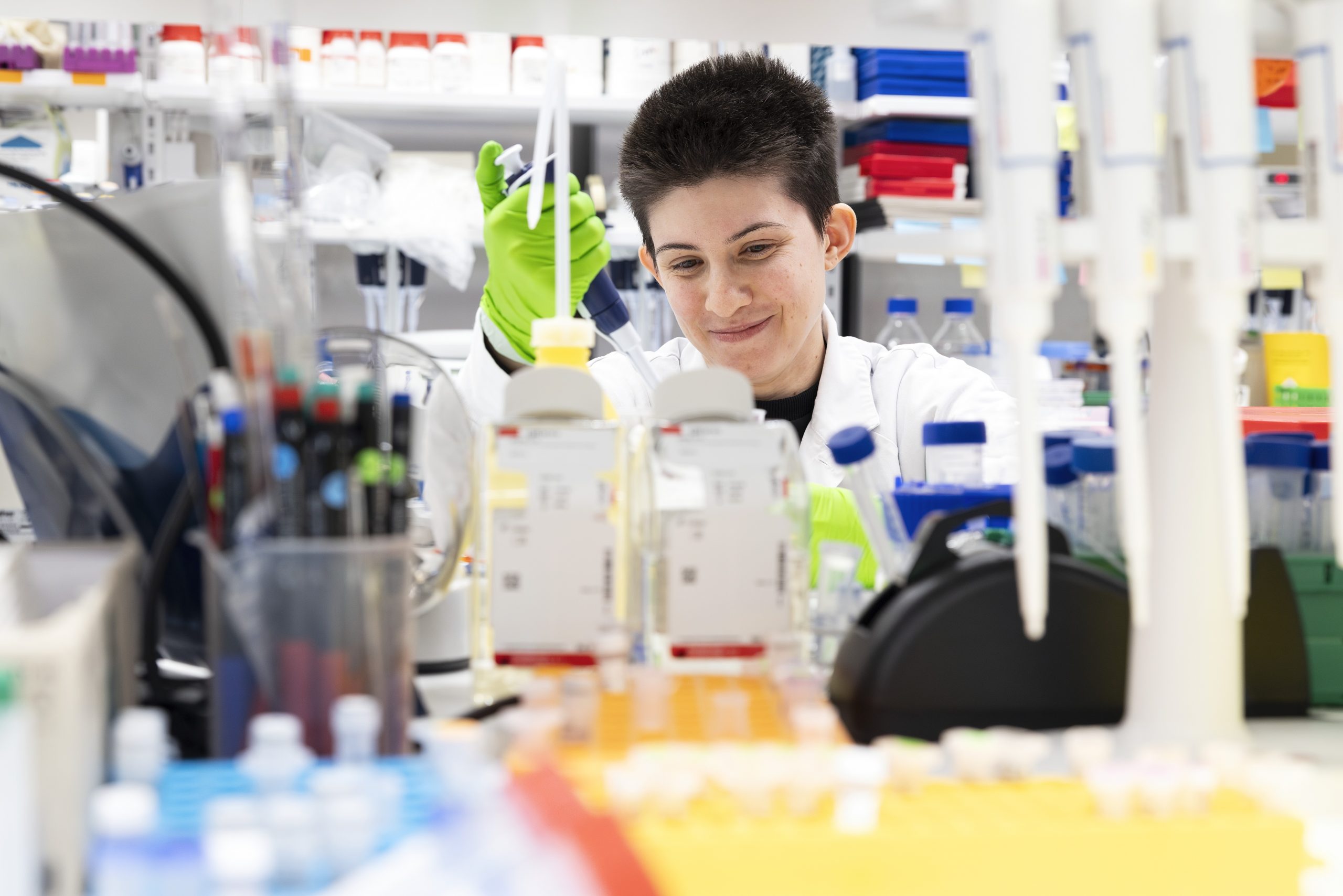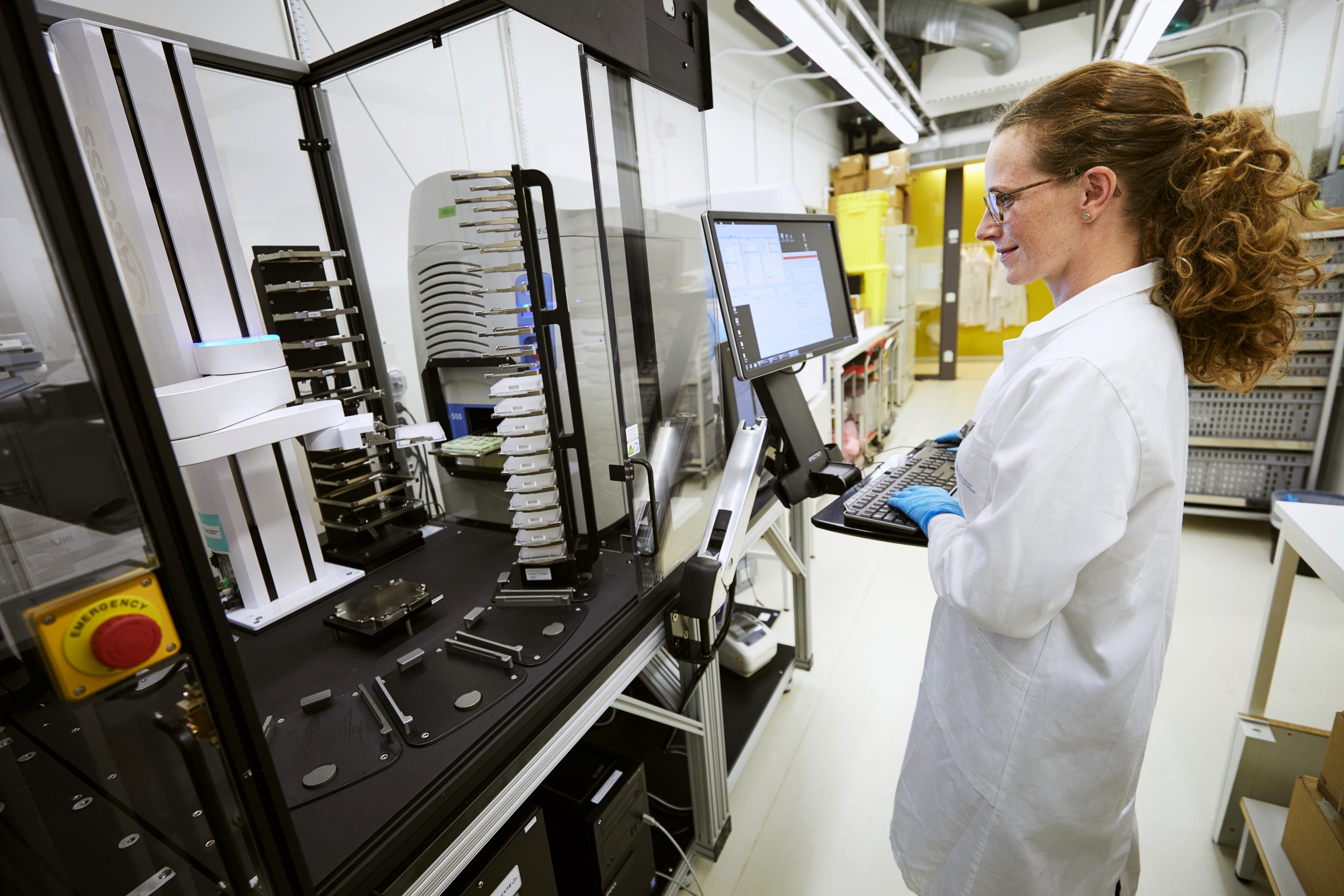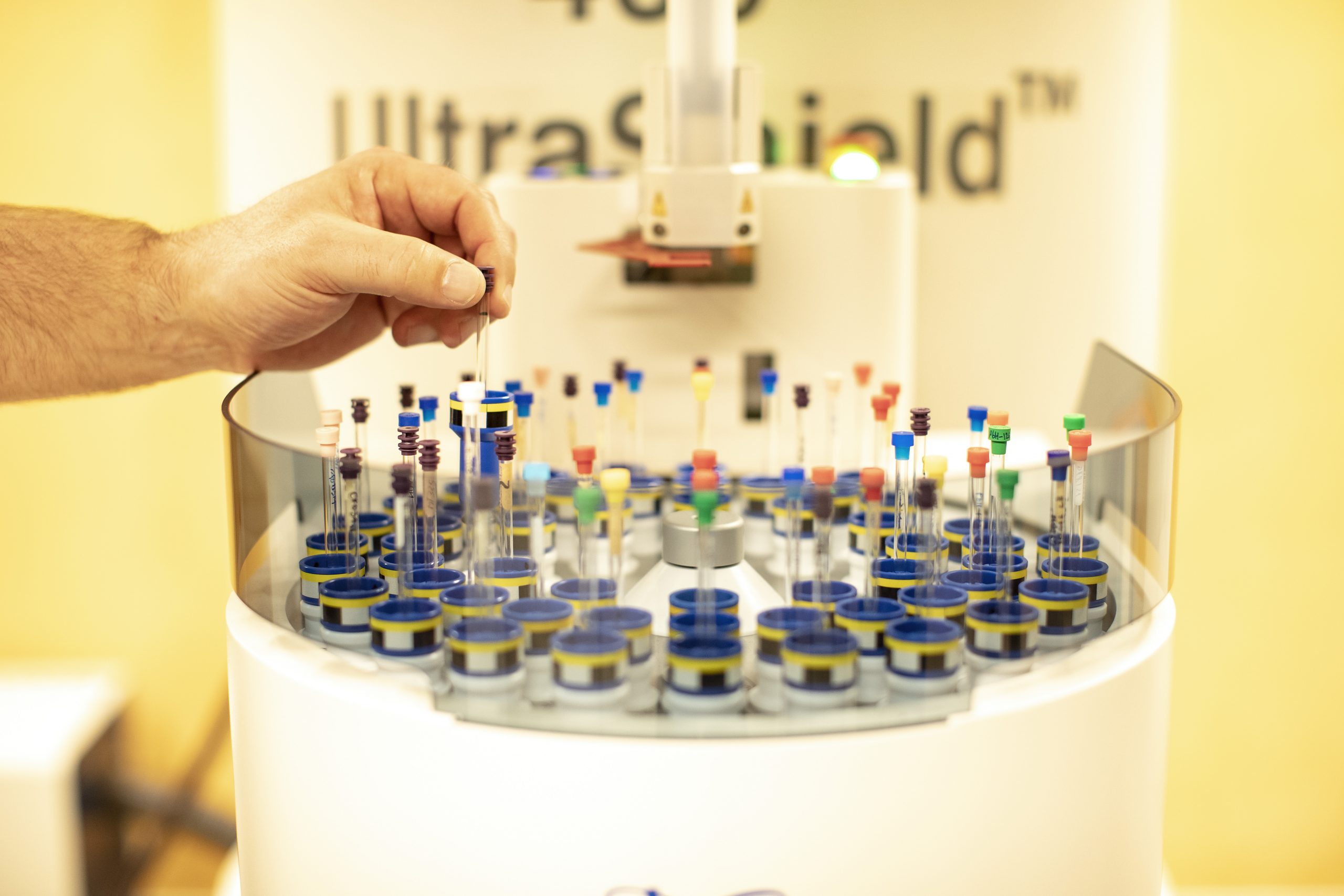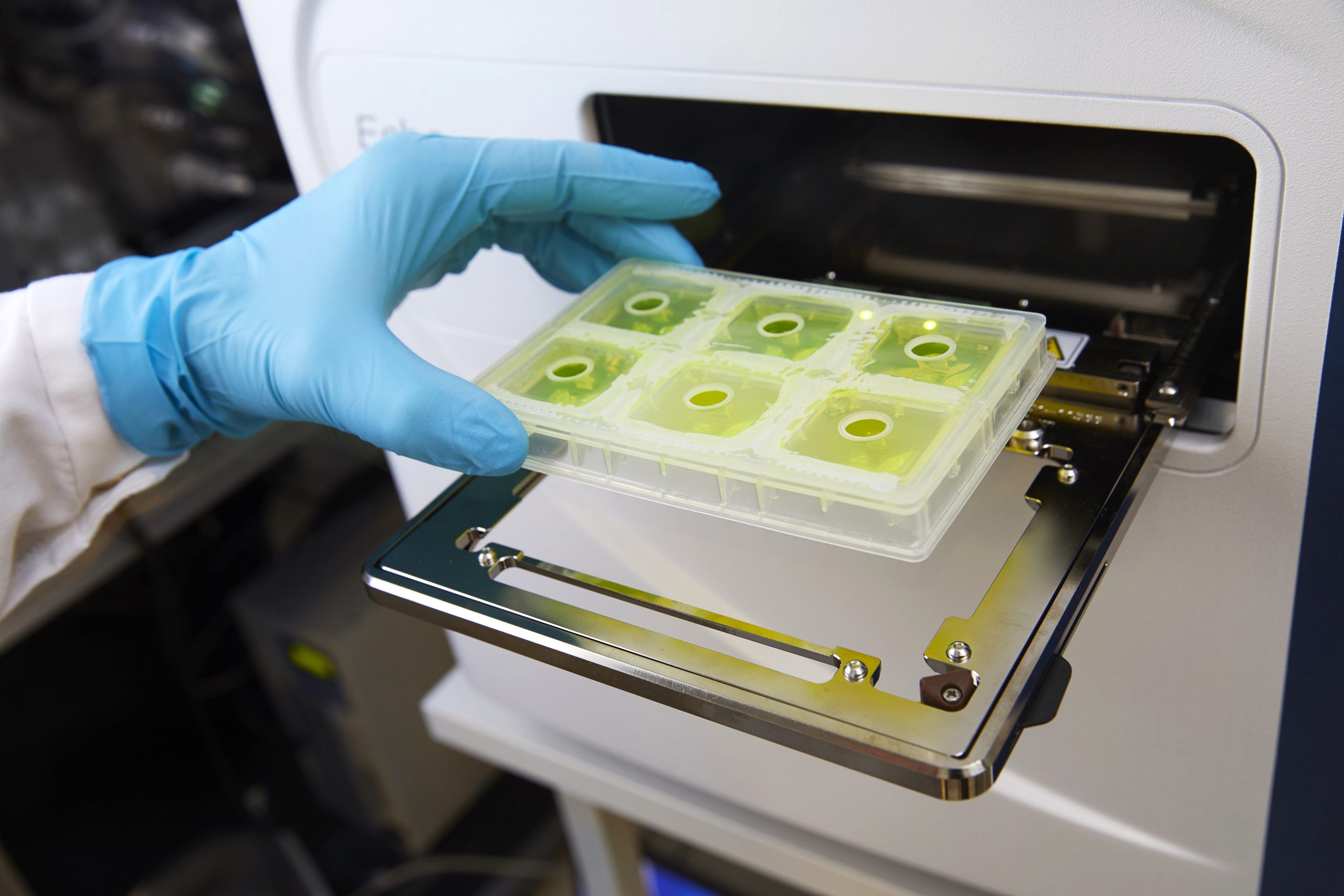Chemical Biology and Genome Engineering
Skip to
Generation and Application of Chemical Tools
Fragment-Based Screening by NMR
MOA Elucidation and Target ID by MS

Briefly about Chemical Biology and Genome Engineering
Chemical Biology is an interdisciplinary field at the interface of chemistry and biology, focusing on chemical techniques and tools to study, manipulate, and understand biological systems. It explores the chemical basis of biological processes, enabling the design of molecules to probe cellular functions, modulate biomolecular interactions, and to lay the foundation for the development of therapeutic agents.
Genome engineering focuses on the precise manipulation of genetic material within cells. Targeted gene editing by CRISPR-Cas systems allows to study, modify, or correct specific DNA sequences. Functional genomic screens with CRISPR-Cas systems allow systematic interrogation of gene function across genomes. This approach enables high-throughput exploration of pathways involved in disease mechanisms, discovery of therapeutic targets, and understanding of complex biological networks.
Chemical Biology and Genome Engineering synergize in the fields of target discovery, target validation, and mechanism-of-action elucidation.
Contact person
For general inquiries about chemical biology and genome engineering services at SciLifeLab, please contact Bernhard.

Platform Co-Director
Chemical Biology and Genome Engineering Platform
Karolinska Institutet
bernhard.schmierer@ki.se
What we offer at SciLifeLab
Generation and Application of Chemical Tools
SciLifeLab provides the full range of services in Chemical Biology, from providing compound libraries to large scale chemical screens followed by medicinal and computational chemistry, compound profiling, and hit validation.
At SciLifeLab, the CBCS unit offers:
- Chemical compound libraries
- Assay development and small compound screening
- Medicinal chemistry
- Computational Chemistry
- Compound profiling
Explore more

Fragment-Based Screening by NMR
Fragment-based screening by NMR aims to identify small molecular fragments binding to a target protein. By using nuclear magnetic resonance (NMR) spectroscopy, it detects weak interactions between low-molecular-weight compounds and the protein, providing detailed structural information. Once binding fragments are identified, they serve as starting points for chemical optimization, where fragments are modified or combined to create high-affinity, drug-like molecules.
- Super-resolution fluorescence microscopy imaging
- Single-molecule dynamic measurements
- MINFLUX fluorescence nanoscopy
- Volume imaging by focused ion beam scanning electron microscopy (FIB-SEM)
- Combining fluorescence and EM data with correlative array tomography (CAT)
Explore more

MOA Elucidation and Target ID by MS
Chemical Proteomics deciphers changes in proteome signatures induced by an active compound for mechanism-of-action elucidation and target identification.
At SciLifeLab, the Chemical Proteomics unit offers:
- Proteome Integral Solubility Alteration (PISA)
- Functional Identification of Target by Expression Proteomics (FITExP) ProTargetMiner, FITExP-derived proteome signatures for a library of anticancer molecules
- Affinity proteomics with chemically engineered probes
- Thermal Proteome Profiling (TPP)
- RedOx Proteomics
- Hydrogen-deuterium exchange mass spectrometry (HDX-MS)
Explore more

Gene Editing and Large-Scale Genetic Screens
CRISPR Cas9-engineered cell lines and primary cells are powerful tools for studying gene function and gene regulation, disease mechanisms and cellular differentiation. SciLifeLab provides the full range of CRISPR technologies used today to create defined genetic changes in cells.
Massively parallel gene perturbation (“Pooled CRISPR screens”) are customizable, scalable, and cost-effective tools in both de novo discovery, and in functional exploration of phenotypes of interest. SciLifelab offers end-to-end solutions for screens with different Cas enzymes and Cas fusions to interrogate protein coding genes, ncRNAs, or genetic elements.
At SciLifeLab, the CRISPR Functional Genomics unit offers:
- Precision gene editing in cell lines
- Pooled CRISPR screens in many different modalities
Explore more

Other Infrastructure Resources
Fragment-based screening by X-ray aims at identifying small molecular fragments binding to a target protein using X-ray crystallography. This method provides detailed atomic-level information about fragment-protein interactions, enabling rational design of more potent molecules by growing, merging, or optimizing fragments. It is particularly valuable for targets with well-defined binding pockets and is widely used in the development of inhibitors for enzymes and protein-protein interactions.
EU-OPENSCREEN ERIC enables chemical biology and early drug development by providing screening and chemistry facilities, as well as compound libraries through partner sites throughout the EU. Sweden has been a member of EU-OPENSCREEN ERIC since 2022, and participates with CBCS ins Stockholm and Umeå, as well as Chemical Proteomics in Stockholm as active partner sites.